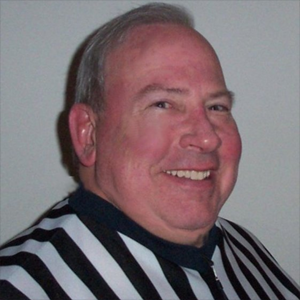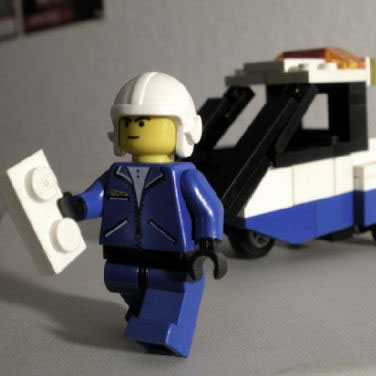
Rndballref
20 Years Experience
Chicago, IL
Male, 60
For twenty years I officiated high school, AAU and park district basketball games, retiring recently. For a few officiating is the focus of their occupation, while for most working as an umpire or basketball referee is an avocation. I started ref'ing to earn beer money during college, but it became a great way to stay connected to the best sports game in the universe. As a spinoff, I wrote a sports-thriller novel loosely based on my referee experiences titled, Advantage Disadvantage
Actually, a dribble ends when you put two hands on the ball. But even if you have not dribbled already, putting two hands on the ball on the floor is normally called double dribble.
It depends on 1) your current size and potential size and 2) your level of fundamental skills (dribbling, shot accuracy, speed, passing, basketball IQ, selflessness, and most importantly the needs of your team).
I don't think there is a perscribed rotation as to which referee should put the ball in play. As a practice, after one of my partners called a technical foul I would have him be the official to put the ball in play, thereby putting him opposite of the table and benches.
I think your question is after a technical, is the throw in official the new trail? And the answer is yes. On any sideline throw in, the lead should come to the trail half of the court, making the throw in official the trail.
The referee (as opposed to the other officials) has the responsibility to decide matters upon which the timer and scorekeeper disagree. Furthermore, "the referee shall make decisions on any points not specifically covered in the rulebook."
There is no explicit provision in the rule book to address the situation you describe. So, the referee has to decide what would be consistent with the intent of the rulebook.
Meter Maid
 Is it tough to have a job that consists exclusively of ruining peoples' days?
Is it tough to have a job that consists exclusively of ruining peoples' days?
Call Center Employee (Retail)
 Which cable company do you think has the absolute worst customer service?
Which cable company do you think has the absolute worst customer service?
Certified Nurse Aide
 What's it like going into a room in the morning to find someone dead?
What's it like going into a room in the morning to find someone dead?
There are no allowances for a crossover. Travelling is traveling. Here is the travelling rule:
1) if you catch the ball with both feet on the floor, either foot can be the pivot.
2) if you catch the ball in the air and land simultaneously on both feet, either can be the pivot. If one foot hits the floor first it must be the pivot. However, if you catch the ball in the air hop on one foot then land on both feet, neither can be a pivot.
3) once you have established your pivot foot you can lift the pivot but must pass or shoot before the pivot returns to the floor. (and of course you cannot hop on your non-pivot foot if the pivot foot is in the air).
People want to say that you get 1 & 1/2 steps or you get 2 steps. Neither of these are correct. It depends on whether you are entitled to a pivot or not, and then you can lift up the pivot and onto your non pivot but you must shoot or pass before the pivot hits the floor.
The jurisdiction of the officials ends when the score is approved and the referees leave the visual confines of the court. Each state decides, with bylaws, what penalties will be assessed for player and coach ejections. There is no rule or penalty in the NFHS rulebook that an official can assess after a game is over. So the official should write up a game report and send it to the state (or league) for further adjudication.
To have a backcourt violation a team must first achieve possession in their front court. There is no team possession on a throw in.
So, in your scenario Players B1 and A2 touch the ball, but neither have achieved possession. Therefore, no backcourt violation when A2 retrieves the ball in his backcourt.
-OR-
 Login with Facebook
Login with Facebook (max 20 characters - letters, numbers, and underscores only. Note that your username is private, and you have the option to choose an alias when asking questions or hosting a Q&A.)
(A valid e-mail address is required. Your e-mail will not be shared with anyone.)
(min 5 characters)
By checking this box, you acknowledge that you have read and agree to Jobstr.com’s Terms and Privacy Policy.
-OR-
 Register with Facebook
Register with Facebook(Don't worry: you'll be able to choose an alias when asking questions or hosting a Q&A.)